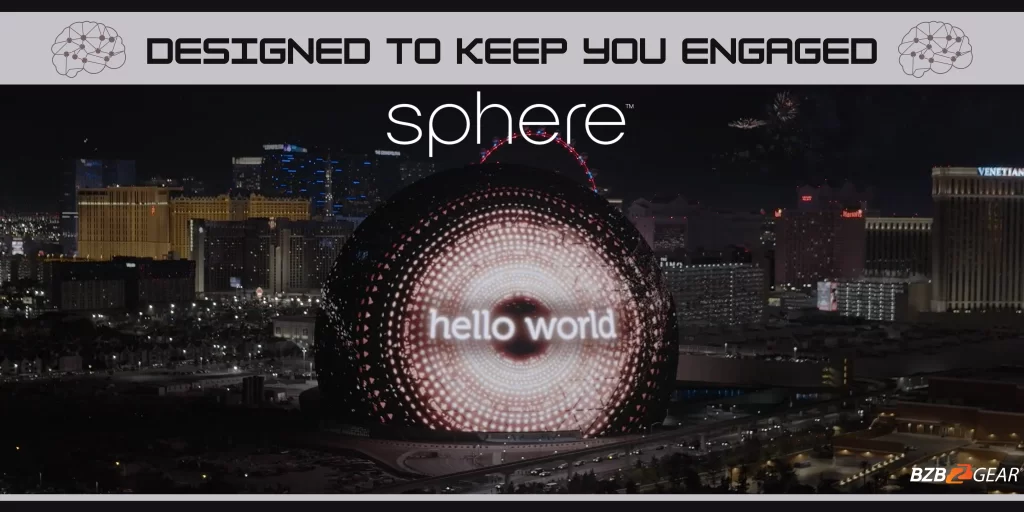The MSG Sphere: Combining Mathematics and Engineering for Immersive Human Engagement

The MSG Sphere, a groundbreaking immersive venue, captivates audiences with its awe-inspiring design and cutting-edge technologies. Behind its revolutionary structure lies a fusion of centuries-old mathematical formulas and state-of-the-art engineering techniques. From the calculation of surface area and volume to the principles of light propagation and sound synthesis, mathematics plays a vital role in the construction of the MSG Sphere. This article explores the various mathematical equations and laws employed in its creation and how they contribute to fostering human engagement.
Area of a Sphere: Creating a Visual Spectacle
The MSG Sphere's exterior, known as the Exosphere, is adorned with 580,000 square feet of LEDs, transforming it into a mesmerizing visual canvas visible even from space. The calculation of the sphere's surface area using the formula for the area of a sphere allows for the determination of the square footage required to create this vibrant spectacle.
Volume of a Sphere: Amplifying Immersive Technologies
To maximize the immersive experience within the MSG Sphere, the volume of a sphere was employed to calculate the interior square footage. With the help of this calculation, the MSG Sphere boasts a 160,000 square feet LED media plane, equivalent to four football fields, as well as 17,385 seats within the Bowl, providing an unparalleled audiovisual experience.
Finite Element Method: Virtual Testing and Structural Integrity
The engineers and architects responsible for constructing the MSG Sphere leveraged the Finite Element Method. By transforming mathematical equations into computer models, they could virtually test the strength and functionality of key structures before physically constructing them. This method ensures the structural integrity of the venue, offering a safe and immersive environment for visitors.
Geodesic Math: Forming the Spherical Structure
The MSG Sphere's iconic spherical shape is achieved through the application of geodesic math. The laws of this mathematical field employ hundreds of interlocking triangles, forming a robust and visually striking exoskeleton. This unique architectural design enables the creation of a 360° immersive venue, setting the stage for unforgettable experiences.
Law of Sines: Calculating Architectural Angles
Precise architectural angles are crucial for the visual appeal and functionality of the MSG Sphere. The Law of Sines plays a vital role in determining these angles, whether it's the pitch of the Atrium escalators or the curvature of the archways. By adhering to these mathematical principles, the MSG Sphere achieves its captivating aesthetics.
Pi: The Universal Constant
Pi, the mathematical constant representing the ratio of a circle's circumference to its diameter, finds its way into nearly every aspect of the MSG Sphere's construction. Whether it's calculating the size of pizzas or determining the optimal seat placement, Pi serves as the foundation for a range of calculations, enhancing the overall experience.
Stereographic Projection: Immersive Imagery
The MSG Sphere's immersive imagery is made possible through stereographic projection. By leveraging this mathematical formula, custom cameras capture ultra-wide imagery that seamlessly fits onto the curved LED canvas. This technology replicates the human eye's vision and enables the creation of lifelike visual experiences.
Visual Acuity: Ultra-High Resolution Display
Visual Acuity, a mathematical concept used by eye doctors to determine the smallest visible dot at a particular distance, played a role in determining the pixel density required for the MSG Sphere's ultra-high-resolution displays. By using this equation, the Sphere ensures crisp and detailed images, captivating the audience with stunning visual clarity.
Snell's Law: Crystal Clear Imaging
Snell's Law, which governs how light travels through lenses, is employed in the design of the MSG Sphere's immersive cameras. This equation allows for precise focusing and clear imaging, enabling the Sphere to display crystal-clear images in 16K resolution, maintaining optimal focus throughout the venue.
Lens Projection Formulas: Wrapping the Audience in Immersive Visuals
The MSG Sphere's immense LED screen envelops the audience, creating a fully immersive visual environment. The application of lens projection formulas and spherical trigonometry ensures that images captured by cameras are accurately mapped onto the curved display, enhancing the immersive experience for spectators.
Final Thoughts
The MSG Sphere stands as a testament to the seamless integration of mathematical principles and innovative engineering. Through carefully applying mathematical equations and laws, this groundbreaking venue showcases captivating visuals, lifelike soundscapes, and immersive technologies that engage and enthrall the audience. From surface area and volume calculations to the principles of light and sound propagation, mathematics plays a pivotal role in creating a truly unforgettable experience within the MSG Sphere.
8.00 a.m. - 5.00 p.m. (PST)
10.00 a.m. - 3.00 p.m. (PST)
(by appointment only)



